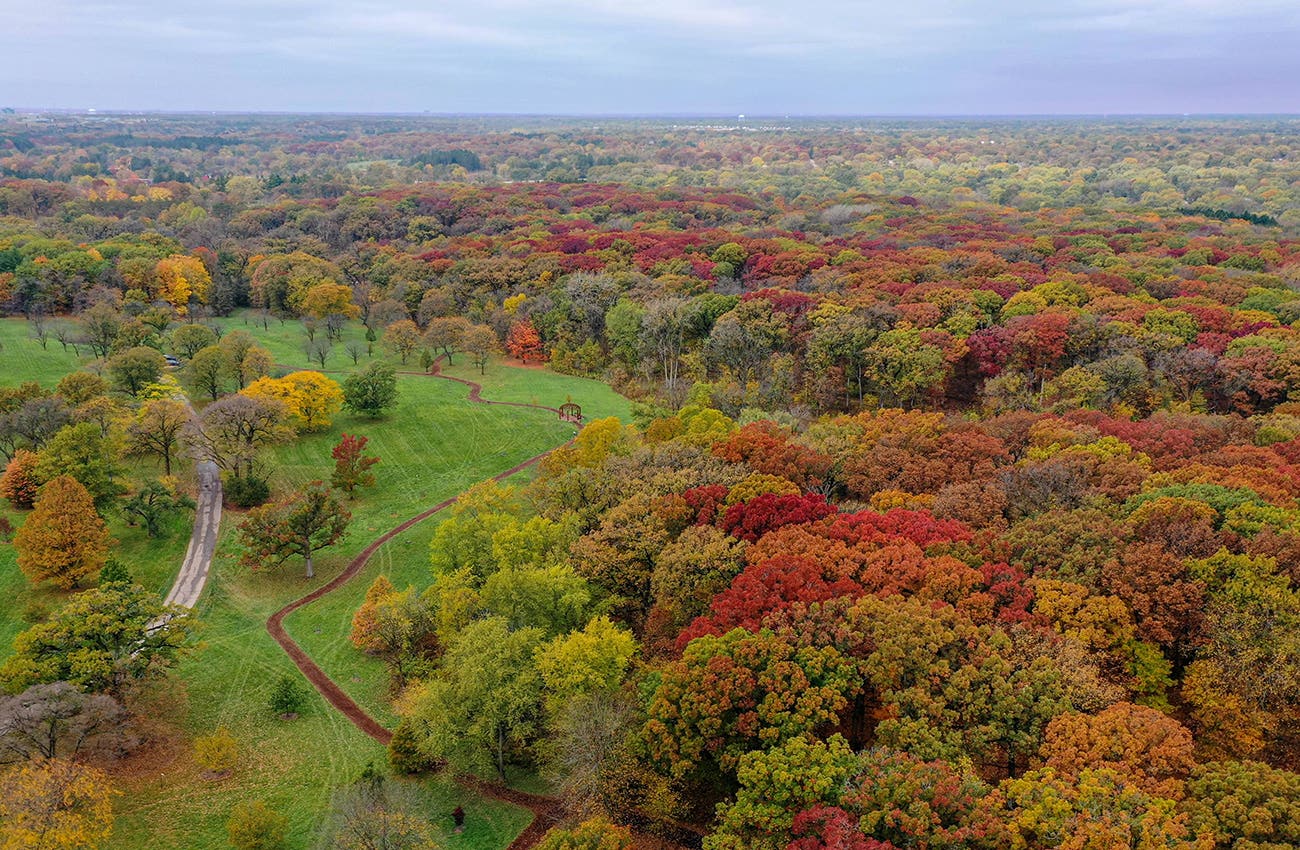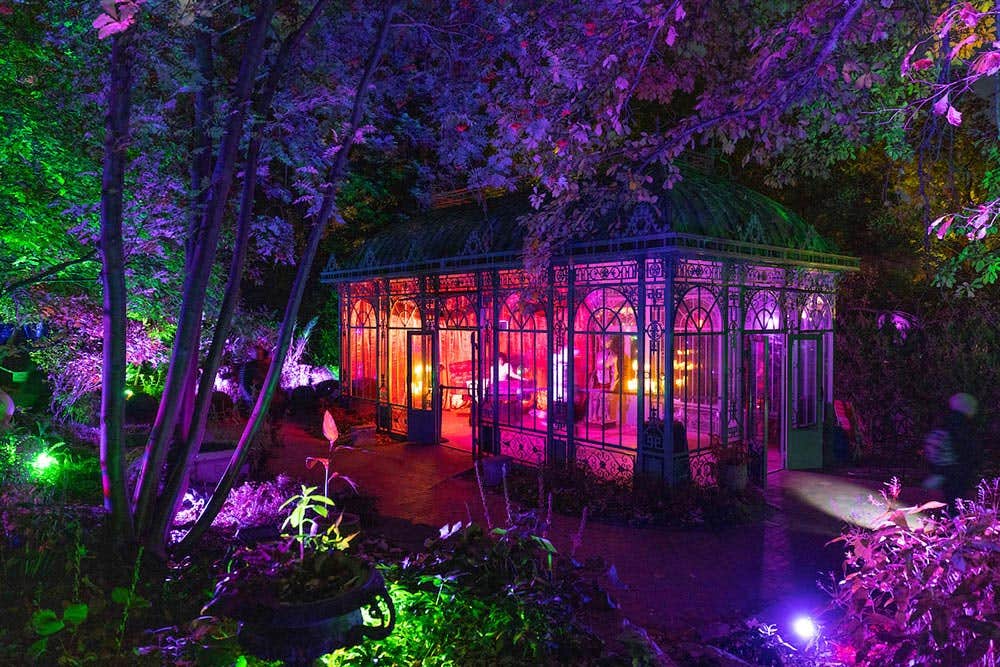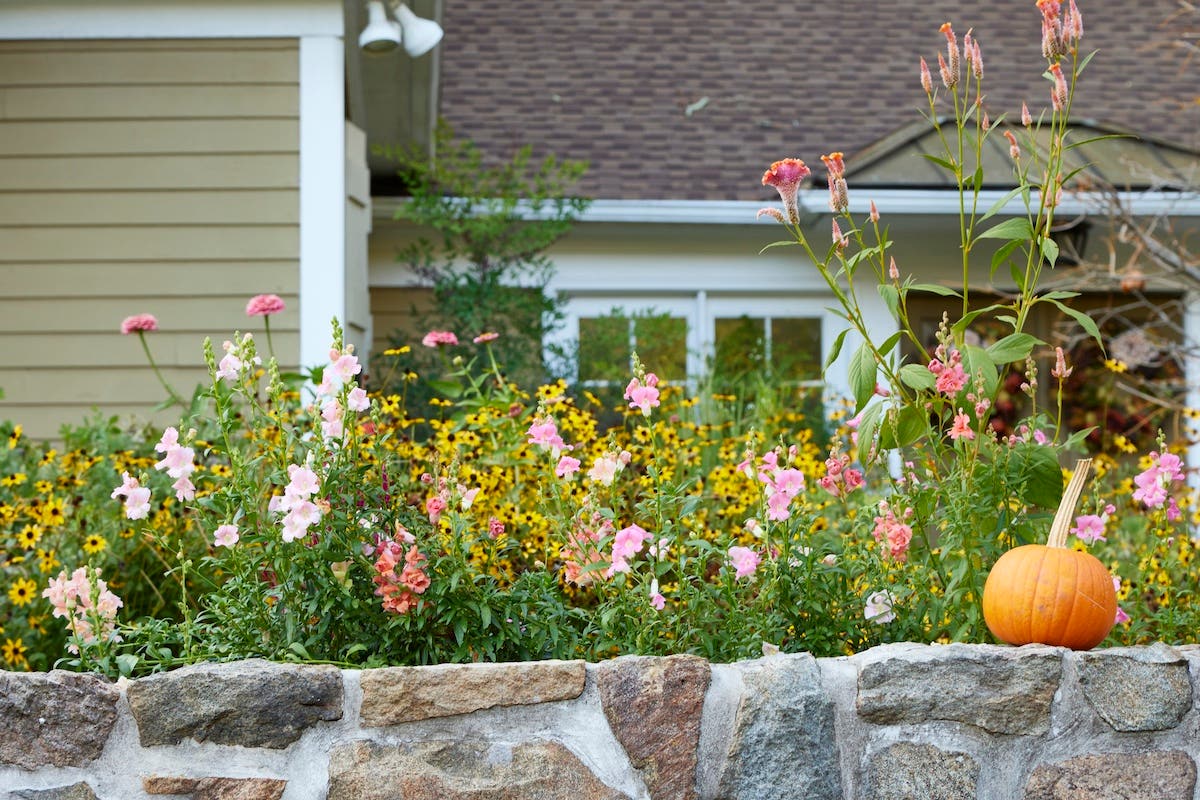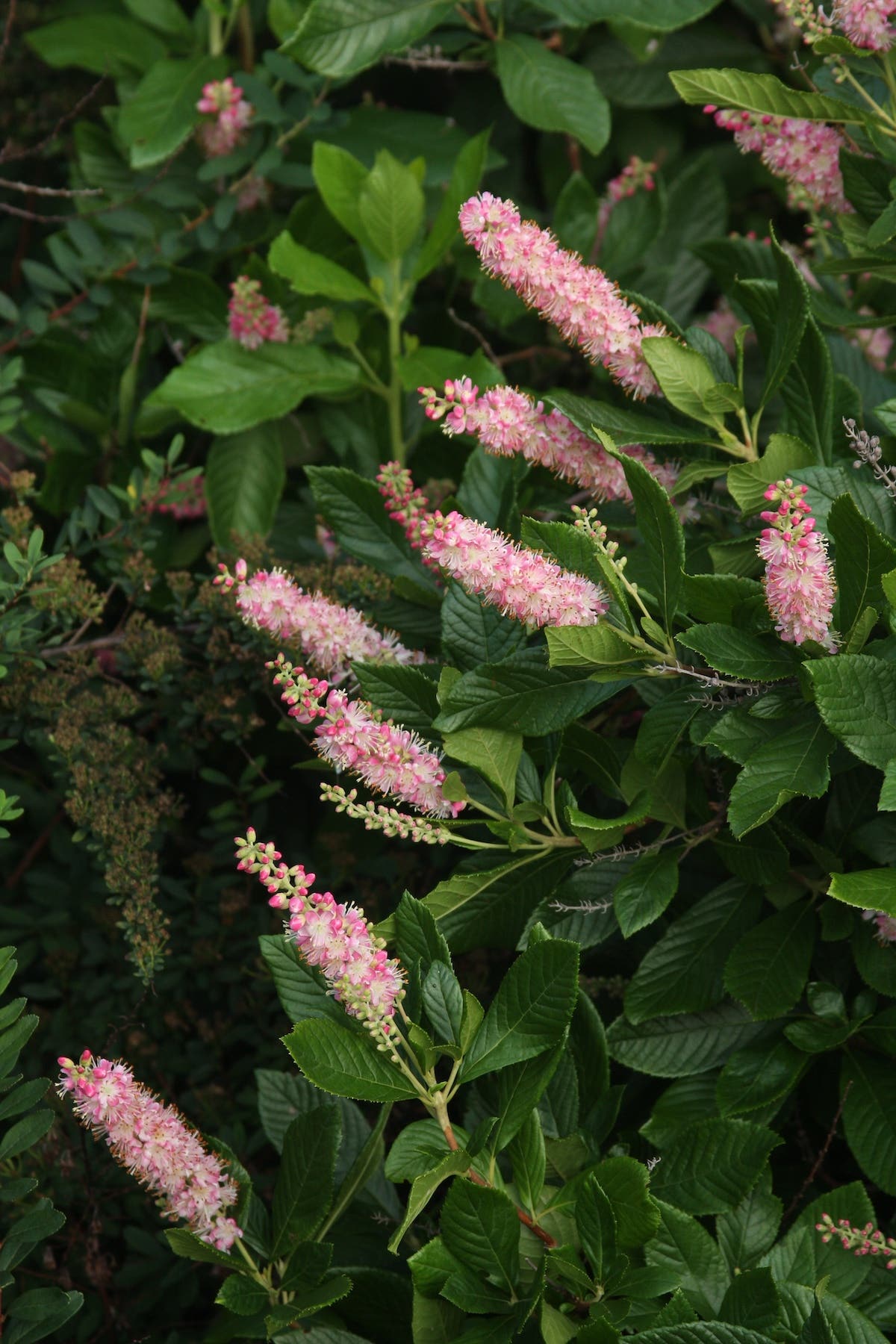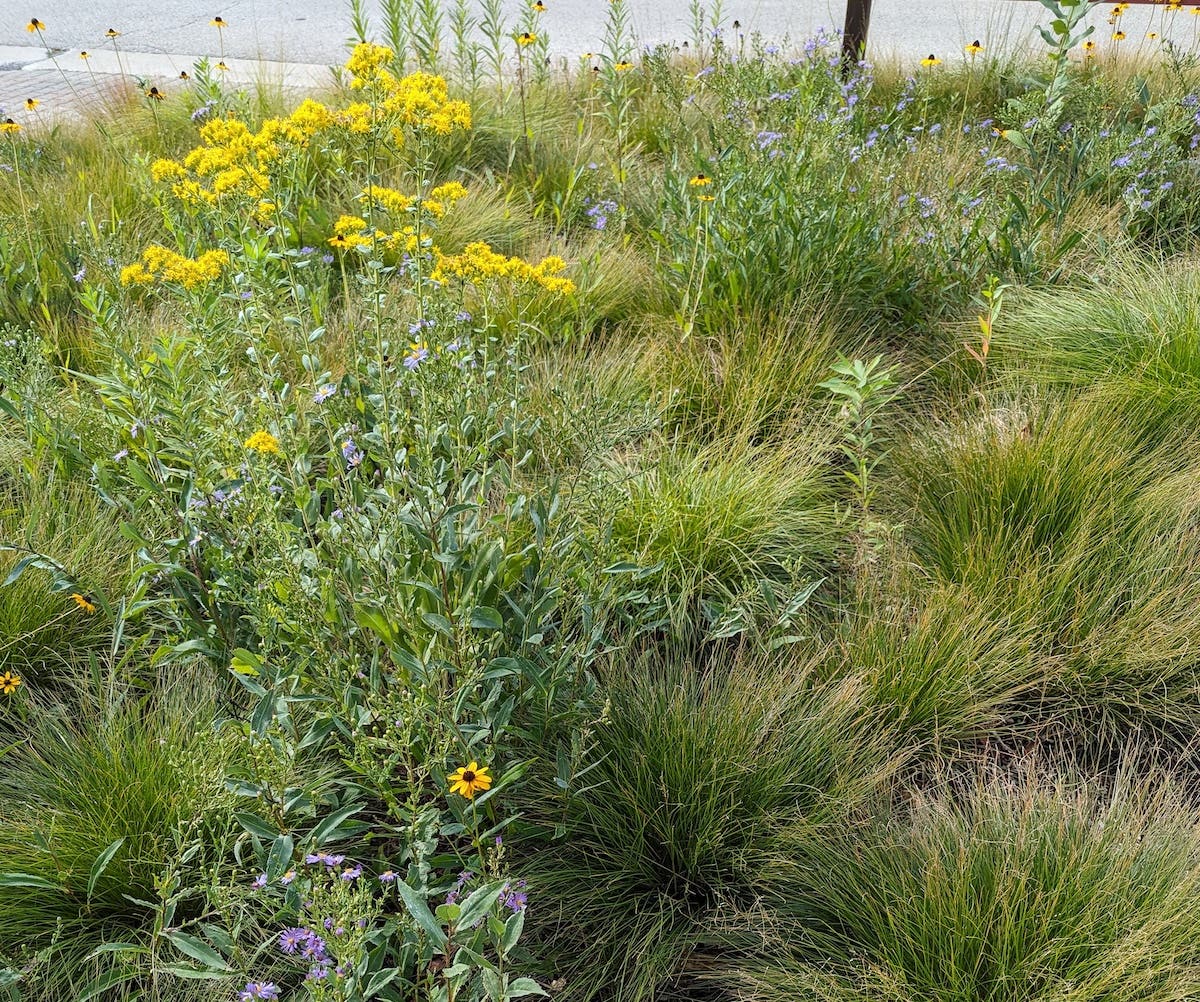Labyrinth Gardens Offer a Path to Peacefulness
When utilized in a garden, this ancient design offers a path for a mindful journey through lush plantings.
In times of uncertainty, many of us find our refuge in the garden. Labyrinth gardens go a step further, combining the peaceful beauty of favorite plants with an ancient design that facilitates walking meditation.
“Labyrinths go back 4,000 to 6,000 years,” explained Lars Howlett. A master builder at Discover Labyrinths, he brings labyrinths to people throughout the world. Unlike a maze that creates dead ends, a labyrinth is a series of pathways that take a person on a mindful journey to the center and then back out to the starting point.
"It's a long, winding path. The labyrinth is trying to take you in a long, convoluted journey. It's a sacred time and space,” said Howlett. "Stepping into the labyrinth is stepping out of the everyday.”
An introduction to labyrinth gardens
My introduction to labyrinths began more than 25 years ago when I learned of a new garden in Lewistown, Montana. At that time, I lived on the other side of the state and never ventured to see it in person. But while spending time in Lewistown clipping fish fins at the hatchery in May 2024 (which is a totally different story!), I broke away to visit the garden for the first time. I kicked myself for not doing so decades sooner.
Nadine Robertson, the hardworking caretaker of the Lewistown Community Labyrinth Garden, was weeding and hauling mulch to top-dress the beds. Reluctant to disturb her work, I initially hesitated entering, but I found I couldn’t resist following the pathway. I marveled in the plants and care taken to create such a beautiful space. Stretching 90 feet in diameter and surrounded by a stately black fence to dissuade the park’s voracious deer, the garden put on an impressive display of lush green foliage and spring flowers.
As I stepped under the arch into the labyrinth, I was greeted by the “Keeper of Dreams,” a larger than lifesize bronze sculpture of a girl tilting a watering can over perennials. The nearly three-foot-wide, neatly mowed grass path turned to the left as I began the seven-circuit route to the center of the labyrinth. Flowers in 18-inch-wide, concrete-trimmed beds flanked the path.
Being in late spring, euphorbia (Euphorbia polychroma), fernleaf peonies (Paeonia tenuifolia) and forget-me-nots (Myosotis scorpioides) welcomed each step. Daffodils and violets (Viola) still bloomed, while early-season irises (Iris) and lupine (Lupinus polyphyllus) began their vibrant show.
On their own, the flowers would have been beautiful, but they became something more in the labyrinth experience. They lent a welcoming energy to the garden as I walked to the bench at its center, then wound my way back out.
A long tradition
Labyrinths appear in many forms across cultures. They seem to regain popularity when and where they are most needed. Dr. Lauren Artress, author of Walking a Sacred Path and Path of the Holy Fool and the founder of Veritas, an excellent resource for all things labyrinth, first discovered the power of these ancient designs at Chartres Cathedral in France. Created in 1201, it’s likely this labyrinth, like many of its era, was put in place to create a close-to-home pilgrimage for Christians who couldn’t afford to go to Jerusalem.
Lars Howlett, who has been helping others create labyrinths for well over a decade, told me there is truly no “right” way to create a labyrinth, noting that some people make temporary labyrinths out of sand, cornmeal or even fallen leaves raked to create the pathway.
"The labyrinth reflects the intention of the people and the space it’s in. I feel each labyrinth should look different,” he said. "It's an immersive experience. It evolves over time. I appreciate it as a work of art.”
Permanent creations, Howlett noted, “can be made with water-jet cut stone or haphazard rocks found on the ground. You can make a labyrinth out of what you have a lot of.”
Researching more examples of labyrinth gardens, I came across a seven-circuit labyrinth in West Bend, Wisconsin. (A circuit refers to one loop of the path around the center.) Unbeknownst to me at the time, it’s the sister to the Lewistown Labyrinth, and it was created by Nadine Robertson’s mother-in-law, Barbara Robertson. The connection demonstrates the synchronicities within these creations.
Barbara Robertson said she was inspired by the Montana garden as a good project for when she retired from teaching.
“I had no idea how to do one,” she explained. “I stumbled through the whole process and it’s extremely successful.”
Planning a labyrinth garden
Given the seemingly intricate layout, designing a labyrinth can be intimidating. Howlett said one of the first considerations is determining the pattern.
"It can be as simple as three circuits, especially for back yards or gardens,” he said.
As for position in the landscape, a labyrinth needs a mostly flat area with enough space to fit the circuits. A very small walking labyrinth could be 15 feet in diameter. A 90-foot-round space would fit a large labyrinth with many circuits.
Howlett advises labyrinth builders to consider drainage. It’s important to keep water from pooling anywhere within the labyrinth. Even a slight slope will create helpful drainage, he said, or the labyrinth can be gently domed at the center to drain water outward.
To orient the labyrinth, determine its center and its entrance with the goal of facing something inspiring, such as a garden feature, mountain or other attractive view.
"Some people consult dowsing rods to identify energy within the land,” said Howlett. “Or you can use your intuition to sense where the center should be.”
The next step is probably the most daunting: outlining the pathway to create the circuits winding around the center.
"The easiest way is a spiral, then adding a couple of straight lines. It does seem complex, but you don't have to calculate it all,” said Howlett. “Geometry can be done without numbers. You can pick up a stick and use it as you would a unit of measurement.”
That said, he strongly recommends drawing the labyrinth on paper before applying it to the full-scale version, and initially marking it in a temporary fashion on the ground, such as with spray paint and surveyor flags. It’s also important to consider the ultimate size of the plants prior to planting.
“You have to think about the long-term care of the plants,” he added. “If you plant a tree in the center of the labyrinth, what will it look like (when it’s full grown)?”
Once the pattern is established on the ground, making the garden entails only familiar methods. Barbara Robertson mentioned using a sod cutter to slice sod from the beds, leaving grassy pathways three feet wide to allow for easy mowing.
Just like with any garden, amending the soil is always a good practice to ensure healthy plants that will last for years. Robertson said they were fortunate to start with good soil, but they mulch to keep everything attractive.
Creating visual appeal throughout the season is a goal for any garden, but in a labyrinth it’s especially important. Spring bulbs brighten early-spring walks, and as the summer progresses, new blossoms take center stage.
“We do have a lot of annuals to have color all of the time,” said Robertson.
She said popcorn plant (Senna didymobotrya) provides a brilliant and unique display. A tropical legume from Africa, in its native habitat this shrub reaches 25 feet high. In Wisconsin’s colder climate, it will still grow nearly six feet tall in a season. It is covered with brilliant yellow blooms that resemble ears of corn and even smell like buttered popcorn.
The West Bend Labyrinth’s showcase flowers, though, are daylilies (Hemerocallis) that bloom throughout the summer and well into autumn. Robertson explained the garden was recognized as a Daylily Display Garden in 2009 by the American Hemerocallis Society. Initially, they purchased daylilies, but a local gentleman began donating them years ago, significantly boosting their collection.
“We put a few new ones in every once in a while,” she said. “We have about 120. It’s really special in July, because that when they bloom (the most).”
The winding beds of the West Bend Labyrinth require constant attention by the roughly 40 volunteers who tend the plants, soil and pathway.
“We feel extra fortunate,” she said. “It’s a real gratifying kind of thing that it turned out so nice and so many people can enjoy it.”
Labyrinths in any form are a gift to a community. But surrounding the path with an ever-changing palette of blooms beckons those unfamiliar with this ancient tradition to the take the first step.


